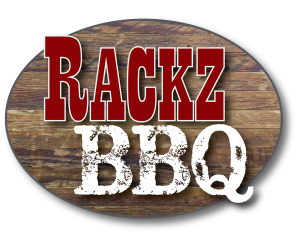Whether you are someone who regularly smoke meats at home, or someone who is ready to try it for the first time, it is important for you to have a full understanding of proper food preparation, safety, and storage. Continue reading to learn what you need to know about food safety and smoking meats.

For Great Smoked Meats and BBQ, Call
317-688-7290!
To get great results from smoking meats, all you really need is low heat, water, flavored wood chips, a smoker grill, a lot of smoke, and of course, your meat of choice. But to get the best results, you also need food safety from start to finish. Below are some important tips that can help ensure you are serving great-tasting, healthy, and safe smoked meat courses to your friends and family.
❈ Before Smoking Your Meat
Thawing and Defrosting:
If in a frozen state, your meat needs to be completely thawed before you can season or cook it in your smoker. There are three primary methods of thawing meat safely: refrigeration, cold water, and microwaving. The safest and most recommended method is to thaw your meat in the refrigerator. Simply keep the meat in its packaging and place it on a plate to thaw overnight. If you need a faster option, the next best method is to thaw frozen meat in cold water. Just place the meat in an enclosed waterproof plastic bag and submerge it in cold water, changing the water every half hour until the meat is entirely thawed.
The least recommended, but still somewhat effective, method is to use the microwave to defrost frozen meat. To thaw frozen meat in the microwave, you will need to understand your microwave’s defrost settings since make and models vary in operation and performance. Refer to the owners’ manual for instructions on how to defrost frozen meat in your particular make and model microwave. If you choose this method, it is important that you immediately cook the meat once it is thawed.
Marinating:
It is important to marinate your meat in controlled temperatures so that bacteria does not contaminate the food. It is safe to marinate meats in the refrigerator, so long as the temperatures do not exceed 40 degrees Fahrenheit. Furthermore, you never want to cross-contaminate marinades. If you want to season your meat with your leftover marinade while it’s cooking, you have to boil the liquid first to eliminate the bacteria that seeped out of the raw meat.
❈ During the Smoking Process
Thermometers:
When smoking meats, you will need two separate thermometers to keep your operate safe. First, utilize your smoker’s built-in thermometer or temperature gauge to ensure the internal compartment remains between 225 and 300 degrees Fahrenheit. Second, use a food thermometer to test the internal temperature of your meat.
The safe internal temperature point depends on the type of meat you are smoking, so be sure to review a chart of recommended meat temperatures. For example, fresh beef, veal, lamb, and pork can be safely consumed at 145 degrees Fahrenheit, while poultry needs to be at least 160 to 165 degrees Fahrenheit before consuming.
❈ After Smoking Your Meat
Resting and Storing:
After you have finished smoking your meat, you must let it rest for the certain amount of time. Rest time is important because the internal temperature remains constant or continues to rise, which destroys harmful germs. If you are not serving your smoked meats right away, you have to immediately chill them. Do this within 2 hours of smoking completion, or within 1 hour if it is a very hot day.
For large cuts of meat, you will benefit by sectioning them off, storing in shallow containers, and covering them with an airtight lid. Keep them refrigerated until they are ready to be reheated and enjoyed. For best results, you want to consume them within 4 days. Freeze them if you cannot consume them within this time period.
Visit Rackz BBQ for Top-Choice Smoked Meats, Ribs, and More!

Rackz BBQ
317-688-7290
